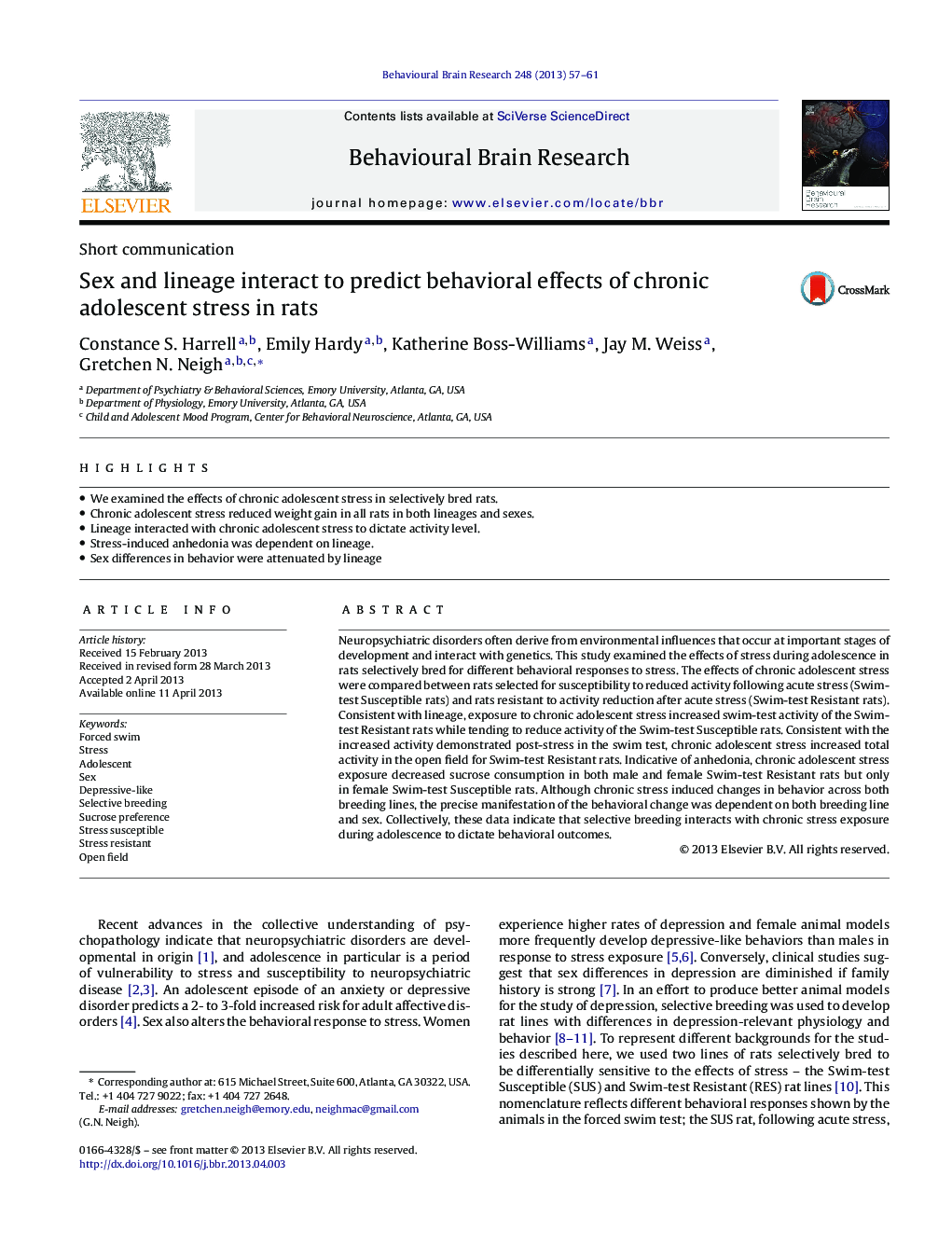| Article ID | Journal | Published Year | Pages | File Type |
|---|---|---|---|---|
| 6259159 | Behavioural Brain Research | 2013 | 5 Pages |
â¢We examined the effects of chronic adolescent stress in selectively bred rats.â¢Chronic adolescent stress reduced weight gain in all rats in both lineages and sexes.â¢Lineage interacted with chronic adolescent stress to dictate activity level.â¢Stress-induced anhedonia was dependent on lineage.â¢Sex differences in behavior were attenuated by lineage
Neuropsychiatric disorders often derive from environmental influences that occur at important stages of development and interact with genetics. This study examined the effects of stress during adolescence in rats selectively bred for different behavioral responses to stress. The effects of chronic adolescent stress were compared between rats selected for susceptibility to reduced activity following acute stress (Swim-test Susceptible rats) and rats resistant to activity reduction after acute stress (Swim-test Resistant rats). Consistent with lineage, exposure to chronic adolescent stress increased swim-test activity of the Swim-test Resistant rats while tending to reduce activity of the Swim-test Susceptible rats. Consistent with the increased activity demonstrated post-stress in the swim test, chronic adolescent stress increased total activity in the open field for Swim-test Resistant rats. Indicative of anhedonia, chronic adolescent stress exposure decreased sucrose consumption in both male and female Swim-test Resistant rats but only in female Swim-test Susceptible rats. Although chronic stress induced changes in behavior across both breeding lines, the precise manifestation of the behavioral change was dependent on both breeding line and sex. Collectively, these data indicate that selective breeding interacts with chronic stress exposure during adolescence to dictate behavioral outcomes.
